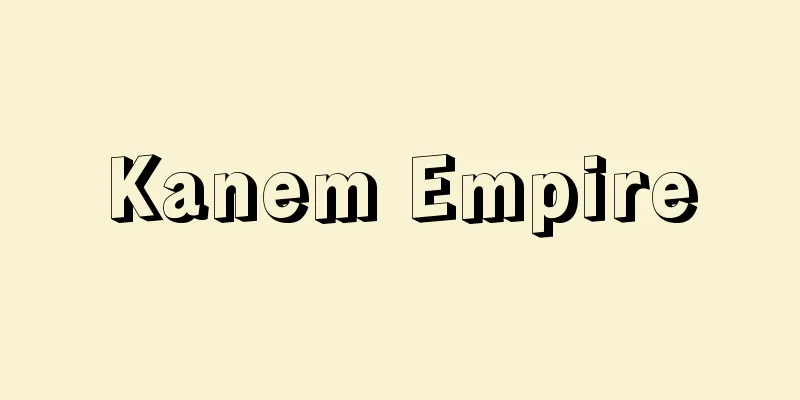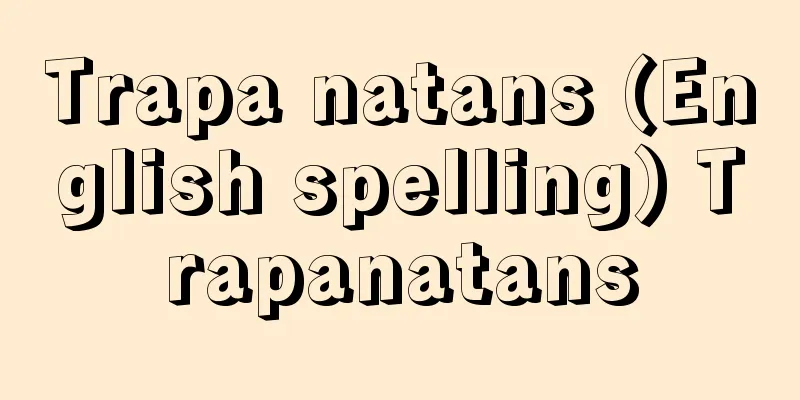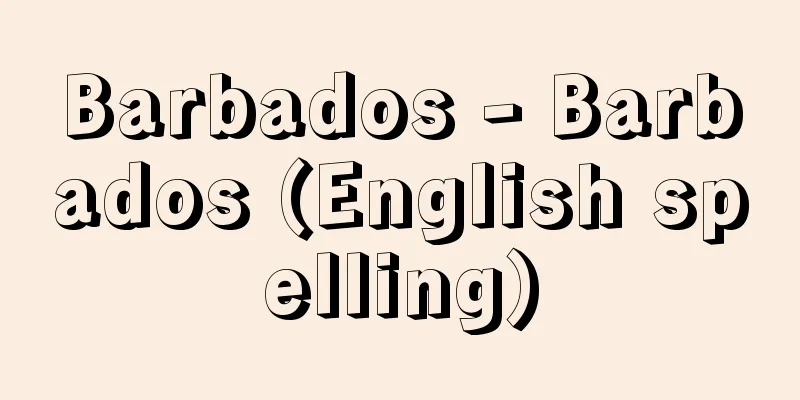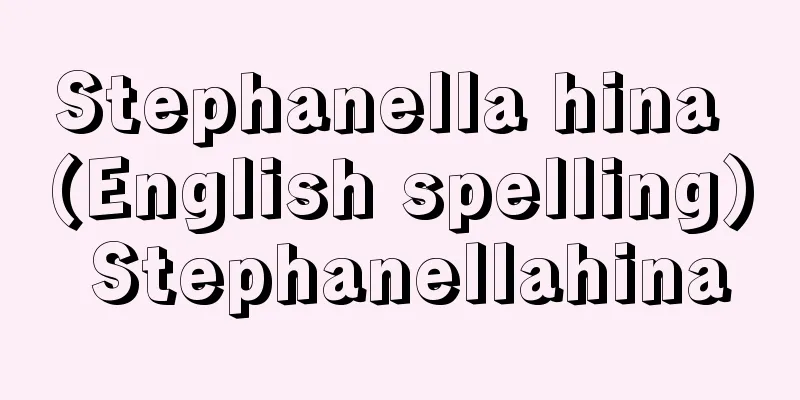Sheet music - Gakufu
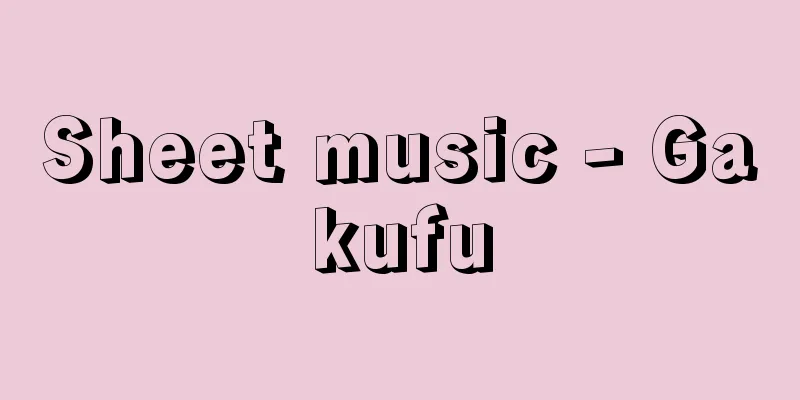
|
Music is visually represented using symbols, letters, numbers, etc., according to certain rules (notation). Today, musical notation, which originated in Europe, is widely used internationally, but even with this, it is impossible to accurately represent all the elements of a piece of music, and it is not enough to simply play the piece exactly as written. For this reason, interpretation of the score is highly valued when performing a piece. [Osamu Yamaguchi] The significance of the scoreMusical scores are originally music that exists as sound, but which are transformed into a visible form for some purpose. They take on various forms depending on the ethnic group and the era, and succinctly express the essence of each musical culture. Music, which is expressed through physical movements such as playing an instrument, has its own foundation in the flow of time and the expanse of space, so by looking at the process and results of its transformation into musical scores, the characteristics of the spatiotemporal structure of music can be seen in detail. However, in reality, the amount of music written down as musical scores is only a small part of the music that has reverberated throughout human history. In order to understand the significance of musical scores in musical culture, it is necessary to consider the "musical score" form as well. In other words, it is the behavior of "musical transformation" observed in the transmission and performance of music. Specifically, the first problem is the physical movement itself. The physical movements observed as the voice rises and falls or as an instrument is played are themselves patterned, so even if the ears are blocked experimentally, the musical structure can be recognized to some extent by relying on vision. In addition, the movements of the conductor of an ensemble (or choir) or the instructor during the training course, especially the hand movements, clearly indicate the melodic contour and beat. The second musical transformation is performed using the voice, and is performed in a form slightly different from the original performance, that is, using onomatopoeia techniques, vowel singing, mouth singing (mouth shamisen, etc.), solfeggio, etc. The third musical transformation also uses the voice, but is essentially different from the second in that it is a conversion to words (language). In other words, the musical structure is conceptualized or abstracted, and a system of musical terminology is created, and "talking about music" is performed in everyday life and rituals. These three musical transformations are probably actions that all peoples have taken in all times. They are thought to have had a great influence on the action of visualizing music in two dimensions, that is, writing it down as musical notation. Most societies with writing probably have some form of musical notation. However, it is more important to note that "written" and "musical" are cultural aspects that are universally shared by human beings. [Osamu Yamaguchi] Purpose and EffectsThe act of freezing music into notation or some other form of music has the effect of perpetuating sounds that would otherwise disappear in an instant, and it serves several purposes. The first is preservation, that is, to serve as a reminder or record. As repertoire expands and acquires cultural or economic value, writing down bits of music for preservation purposes is a widespread practice in the music notation community. This begins primarily in the form of notes, which are merely random symbols that only the listener needs to understand. However, when the second purpose of music is to be read by others, that is, to be passed down or disseminated, a certain style of writing is established. This style is useful for teaching and performance, and becomes the shared property of a certain group (organization, community, school, society). It is then copied by hand as needed, and eventually printed. The first printing is believed to have been in China during the Tang Dynasty, but the only known example of a surviving musical score with a known date is the German "Liturgical Songs" from the late 15th century. In the early modern period, music printing progressed in Europe, China, and Japan, and became the forerunner of the modern and contemporary music industry. In this way, autographs, manuscripts, and various editions have been preserved for posterity, providing music historians with excellent research materials. For the blind, Braille notation, which originated with the French blind musician L. Braille (1809-52), has also been developed. The third purpose of musical notation is to use it for analysis. This is mainly related to the academic field of musicology. In addition to the musical notation commonly used in society, musicologists also transcribe music in their own way, or in recent years, use machines (such as automatic notation machines or melographs) to create precise scores and analyze them. [Osamu Yamaguchi] Form and characteristicsWhen music is actually written down, the two characteristics of music, namely the analog flow and the digital chain of sounds, are taken into consideration, and a graphical form, a symbolic form, or a hybrid form is adopted. A graphical method typically uses a two-dimensional plane as the coordinate axis to graphically represent the passage of time and the change in pitch. For example, in European musical staves, the horizontal axis represents time and the vertical axis represents pitch, while in East Asia, the vertical axis represents time. It also includes writing descending lines, ascending lines, wavy lines, etc. in a manner similar to cheironomy (the movement of a conductor's hands). The characteristics of a graphical form are that it has minimal conventions, and the written lines are realistic, so that they can be easily grasped as icons, and are easily understood across cultures. In contrast, a symbolic method requires training to become familiar with it, as it uses a lot of letters and special symbols in a somewhat arbitrary manner. However, once mastered, it is advantageous for understanding musical styles, since all symbols are given semantic meaning in their context. Generally, musical scores are broadly divided into two types: tablature, which is a performance score for a specific instrument, and notation, which is a phonetic score. This is a European framework. If we were to expand this interpretation, tablature is a diagrammatic form that organizes the playing style of each medium (instrument) into a table, and notation is a symbolic form that gives the symbols meaning as notes. Written scores also have two characteristics, normative and descriptive, and their combinations, depending on the original purpose. Most scores seen in society are normative, while those created by musicologists using machines are descriptive. Normative scores are called emic because they visualize aspects that are meaningful to the musical style in question, while descriptive scores are called etic transcriptions because they are written in detail across cultural boundaries (sometimes even aspects that the cultural bearers cannot distinguish or do not distinguish). The first aspect that is written down as musical notation is the lyrics. Of course, simply writing down words as letters does not in itself constitute musical notation, but there are many examples throughout history and around the world of clearly distinguishing the units of song (lines and stanzas) and writing symbols such as dots and lines alongside the lyrics. Information written on the lyrics includes pitch, pitch changes (melody type), and beats. In the case of instrumental music, playing technique, rhythm, and motifs are also included. [Osamu Yamaguchi] History and distributionThe oldest surviving musical notation is a cuneiform script inscribed on an ancient Babylonian clay tablet (Berlin State Museum), estimated to date to around 800 BC, but has not yet been deciphered. In ancient Greece, written notation was used for both voice and instruments. It has been deciphered to some extent because the old Greek letters were upright, transverse, inverted, and grouped into rules. Later musical notation in the West was mainly developed in religious music. In Jewish chant, letter-like symbols such as dots, lines, and curves were invented, each of which indicates a specific melodic form, so it is called ekphonetic notation. Byzantine chant is characterized by a pitch indication called Middle Byzantine notation from the 12th to 15th centuries. Gregorian chant, which is believed to have originated from the ancient Roman method of indicating linguistic accents, uses symbols called neuma (Latin) and neume (English) to indicate the ascending movement of a melody. Neume symbols themselves can only indicate the relationship between adjacent notes, and to compensate for this deficiency, the use of staff lines began around the 10th century. These are called staff neumes or diastematic neumes or interval neumes, and those used before that are called cheironomic neumes. In the 13th century, a method of floating a rectangular neume (nota quadrata) on four lines became widely used. However, Germanic gothic neumes, which are stud-shaped neumes, were also often used. Staff neumes can accurately indicate the relationship between notes throughout a piece, but the notation of note values remained ambiguous. The Notre Dame school of music in the 12th and 13th centuries invented modal notation, which was created to express the rhythm of each voice in polyphonic music. In other words, the rhythmic form is expressed by the pattern of the arrangement of ligatures. It is also unique as the first example of a piece of music written separately for each voice. Mensural notation, which was developed in the mid-13th century, can further express the relationship between major and minor. It distinguishes between the longa (longa) and the short brevis (■). Mensural notation, which was developed in the early 14th century, further clarified the relationship between major and minor through division and doubling. In the 15th century, the black notations were changed to blank notations, and it became mensural notation. Systematic tablature also appeared between the 15th and 17th centuries. In the case of lute tablature, horizontal lines represent strings and numbers and letters represent frets. In keyboard instrument tablature, keys are represented by numbers and letters. As part of this trend towards diversifying musical notation, a notation method similar to modern staff notation was created in France and Italy in the 15th century. Staff notation, which combines graphical characteristics (lines and spaces) with symbolic characteristics (tadpoles), reached a certain degree of perfection after the Baroque period, and became widely used outside of Europe in the 19th and 20th centuries. China, which has a tradition of Chinese characters and a foundation of musical theory including the twelve syllable notation, is believed to have had musical notation at least as early as the 4th century BC. Over the long history since then, two forms of notation, phonetic notation and performance notation, have each developed in various ways and influenced neighboring regions (Vietnam, the Korean peninsula, and Japan). Phonetic notation expresses the notes of the seven tones and twelve syllables using Chinese characters or their variations, and the size of the spaces when they are written vertically expresses aspects of time and rhythm. Efforts to clearly express the meter bore fruit in the form of seikanfu, which is neatly represented like a table with vertical and horizontal lines. Gongche notation, which represents early modern China, is a typical example, and this was modified and inherited in the classical music of Vietnam and Okinawa. It was in Korea that the Iekanfu was most intricately devised, and in works such as the Annals of the Yi Dynasty, the Annals of Sejong, and the Annals of Sejo, one can trace the changes in the way in which the Korean native 3-beat rhythm was expressed in conjunction with the even-beat group method. Another form in China, the performance notation, developed mainly during the Tang dynasty as a method of notation specific to each instrument, but its foundations had been established even before then. For example, the Six Dynasties koto notation, "Kessekicho Yuran," is a written description of playing techniques, and the only surviving copy is at Shinkoin Temple in Kyoto. Koto notation was later written in reduced notation using abbreviated Chinese characters. For the biwa, there is a notation commonly known as "Tonhuang Biwa Notation," which also uses reduced characters to indicate the position of the left hand fingers. This piece shares some of the same writing style as the Shosoin documents (fragments of biwa music), the Sango Yoroku, and the Gogenkinfu (music for the biwa, not the koto) that still exist in Japan, so deciphering it is being carried out through analogy with current gagaku and philological manipulation, and attempts are also being made to restore and perform it. In Japan, while being influenced by China, many original writing methods have been invented. Oral singing (kuchishoga), which is used in the stage of learning musical instruments, was originally just chanting while clapping hands or a fan, but onomatopoeic notation, which is a kana notation of this, is used for gagaku instruments, Nohgaku music (hayashi), zokuso (koto), shamisen, etc. In many cases, this onomatopoeic notation serves as a supplement to the playing technique notation using Chinese characters and reduced characters written on the same page, but oral singing when performed with onomatopoeic notation is characterized by its expression being closer to the original music. In addition, in Heikyoku and other music, instead of replacing each sound with sounds as in oral singing, a terminology notation was used that typologically organized and named a certain group (melody type, rhythm type). This terminology notation often infiltrates into other systems. Playing technique notation is in the form of characters (or reduced characters) indicating the string names, key points, finger holes, playing techniques, etc. For example, in the case of the koto, the string names are written in mathematical kanji, in the case of the ryuteki and nohkan, numbers indicate the fingering holes and fingering, and in the joruri shamisen, the iroha is used to indicate the key points. In such scores, diagrammatic methods are often used in addition. For example, beats are represented by circles, with the front space being distinguished as a large circle and the back space being distinguished as a small circle (gagaku), and the acute angle of a triangular mark indicates the direction of the plectrum movement (satsuma biwa). When the diagrammatic method is further enhanced in its iconic nature and graphed, the symbols, which are a combination of straight lines and curves, which are also common to Western neumes, depict the contours of the melody and rhythm. This method is known as the doctor of chanting, but it is also similar to the notation method in Tibetan Buddhism (Lamaism), suggesting the spread of musical notation. Important documents for Japanese musical scores include the Hitooyogiri hole name notation and shamisen kansho notation in the "Shichikushoshinshu" (1664), the jiuta shamisen kana kansho notation in the "Genkyoku Taishinsho" (1828 preface), and the koto name notation with clear beats and playing techniques in the "Sōkyoku Taiisho" (1779 preface). In India, since ancient times, there have been musical notations as symbols to indicate important points, especially in Vedic hymns, and from the 7th to 8th centuries onwards, various ingenious ideas have been put into notating instrumental solmizations (sa ri ga ma pa da ni), and in modern times, tala (beat groupings) with mathematical symbols. However, in India, because of the emphasis on improvisation and subtle ornamentation, notating entire pieces of music is not practiced even today. In Southeast Asia, there have been a few instances of notation in Java and Bali, where symbols were inscribed on lontar (palm leaves), and since the 19th century, where main melodies have been recorded using vertical notation with several characters. After contact with the West, these regions, as well as East Asia, have undergone cultural transformation in writing, such as the translation of Western solmizations into numerical notation and the expansion of graphical elements by using staff lines. Examples include gamelan part scores and full scores (numerical scores using Arabic numerals with time on the horizontal axis from left to right in the Western style), Nagauta shamisen bunka score (three lines represent the three strings, Arabic numerals indicate the key points, and underlined notations indicate note values), and Nagauta Kenseikai score (three vertical lines represent time and the three strings, and use Western do-re-mi and symbols such as flat and sharp). In Western Asia, the expression of melodic forms through improvisation is the basis of the musical culture, so there was little need for musical scores. However, Western musical notation was borrowed to represent aspects that were somewhat fixed, and soly signs () and colon signs () were used as auxiliary notations to represent unique microtonals. Currently, Western musical notation is the most widely used system in the world, and is useful for preserving and recording traditional music and creating new music. However, while this system is familiar to many people and helps to transmit music, it can also suppress the subtle musical characteristics of each ethnic group. Therefore, many completely different notations have been devised as new attempts for modern music and various ethnic groups. When many musical notations coexist, the need for transnotation, which converts one system into another, arises, but like translating a language, a transnotation cannot always translate all the meaning of the original score. And since the second half of the 20th century, which has become an age of diversity, we will move in a direction that encourages the coexistence of many musical notations, rather than placing excessive value on a single musical notation. [Osamu Yamaguchi] "NHK Symphony Orchestra, The World of Sheet Music, 3 volumes: (1) The Essence and History of Sheet Music, edited by Tatsuo Minagawa, (2) The Music Scene and Sheet Music, edited by Satoshi Ebisawa, (3) Sheet Music in Japan and the World, edited by Fumio Koizumi (1974, Japan Broadcasting Publishing Association)" Source: Shogakukan Encyclopedia Nipponica About Encyclopedia Nipponica Information | Legend |
|
音楽を記号、文字、数字などを用いて、一定の約束(記譜法)のもとに可視的に表記したもの。今日ではヨーロッパ起源の五線譜が国際的にも広く使われているが、これをもってしても楽曲のすべての要素を正確に記すことは不可能であり、楽譜どおりに演奏すれば事足れりというものではない。演奏に際して、楽譜の解釈ということが重んじられるのもそのためである。 [山口 修] 楽譜の意義楽譜は本来は、音響として存在する音楽をなんらかの目的に応じて可視的な形に置き換えたもので、民族や時代によってさまざまな形態を示し、それぞれの音楽文化の本質を端的に表している。楽器操作などの身体運動により表出される音楽は、それ自体で時間の流れと空間の広がりという成立基盤をもっているので、それが楽譜として変形される過程や結果をみれば、音楽の時空間的構造上の特質をつぶさにみてとることができる。しかし現実には、楽譜として書き記された量は、人類の歴史を通じて鳴り響いた音楽のなかのごく一部にすぎない。音楽文化のなかでの楽譜の意義を理解するためには、「楽譜的」な形態についてもあわせて考える必要がある。すなわち、伝承や演奏に際して観察される「音楽変形」の行動である。 具体的にいえば、第一に身体運動そのものが問題になる。声の上下や楽器演奏につれて観察される身体運動は、それ自体パターン化しているので、実験的に耳をふさいでも、視覚を頼りにしてある程度は音楽構造を認知することができる。また、アンサンブル(合奏・合唱)の指揮者や教習過程での教授者の動き、とりわけ手の運動は、旋律輪郭や拍子を明確に表している。第二の音楽変形は声によるものであり、本来の演奏とはやや異なる形、すなわち擬音技法、母音唱法、口唱歌(くちしょうが)(口三味線など)、ソルミゼーション(ソルフェージュ)などを利用して行われる。第三の音楽変形も声を使うのであるが、ことば(言語)への変換である点で第二の場合とは本質的に異なる。すなわち、音楽構造が概念化ないし抽象化されて音楽用語の体系ができあがったり、日常や儀礼の場で「音楽について語ること」が行われたりするのである。 これら三つの音楽変形は、おそらくすべての民族がすべての時代にとってきた行動であろう。そしてこれらが、音楽を二次元的に視覚化する、すなわち楽譜として書き留めるという行動に大きな影響を及ぼしたと考えられる。文字をもつ社会はほとんどが楽譜をなんらかの形でもっていると思われる。しかしそれよりも、「文字的なもの」と「楽譜的なもの」が人類に普遍的に備わった文化側面であることに注意することのほうが重要である。 [山口 修] 目的と効果音楽を楽譜、あるいはそれに類する形で固定化することは、一瞬のうちに消えてしまうはずの音響を永続させる効果があり、そこにはいくつかの目的が設定される。第一に保存、すなわち備忘や記録に供するという目的がある。レパートリーが拡大したり、それに文化的あるいは経済的価値が伴ってくるにつれ、保存を目的として音楽の一端を書き留めることは楽譜社会で広く行われている。これは主として、自分だけにわかればよい単なる思い付きの記号程度のメモの形をとることから始まる。 しかし、他人が読むことを前提にする、すなわち伝承や伝播(でんぱ)に供するという第二の目的が意識されると、一定の書き方が成立する。その書法は教習や演奏に役だてられ、一定の集団(組織・共同体・流派・社会)の共有財産となる。そして必要に応じて手写され、やがては印刷されるようになるのである。最初の印刷は中国の唐代にあったと推定されるが、現存する楽譜の年代判明の例としては、15世紀後半ドイツの「典礼歌集」が知られている。近世になるとヨーロッパ・中国・日本でそれぞれ楽譜印刷が進み、近代・現代の楽譜産業の先駆けとなった。こうして自筆譜autograph、手写本manuscript、諸々の版edition(s)などが後世にまで残されて、音楽史学者にかっこうの研究史料を提供している。なお、盲人のためには、フランスの盲人音楽家ブライユL. Braille(1809―52)に端を発する点字記譜法も整備されている。 楽譜の第三の目的は、分析に利用することである。これは主として音楽学という学問にかかわる。社会で慣用されている楽譜だけでなく、音楽学者は自ら独自の方法で採譜したり、近年は機械(たとえば自動採譜器、メログラフなど)を利用して精密な楽譜を作成し、分析を行う。 [山口 修] 形態と特質実際に楽譜として書き留められるとき、音楽のもつ二つの特性、すなわち音のアナログ的な流れとデジタルな連鎖が考慮に入れられて、図示的形態、符号的形態、ないしその折衷形態が採用される。図示的な方法は、典型的には二次元の平面を座標軸に見立てて、時間の経過と音高の変化をグラフ的に表すものである。たとえば、ヨーロッパの五線譜においては、横軸が時間を縦軸が音高を、そして東アジアの一般的な方法として縦軸が時間を表すことなどである。また、カイロノミー(指揮者の手の動き)とも似た形で下行線、上行線、波状線などを書くことも含まれる。図示的形態の特質は、最小限の約束事項しかないうえに、書かれた線などが写実的で、いわば図像(アイコンicon)として把握しやすく、文化を越えて理解されやすいということである。これに対して符号的な方法は、文字や特殊な記号をいわば恣意(しい)的に多用するために、なじむまでに訓練を要する。しかし、いったん修得すれば、すべての記号がその前後関係において意味論的含蓄をもたされるので、音楽様式の理解には都合がよい。 一般に、楽譜を大別して、特定の楽器を対象とした奏法譜タブラチュアtablatureと、表音譜ノーテーションnotationの2種類があるといわれるが、これはヨーロッパ的枠組みである。あえてこれを拡大解釈して使うとすれば、タブラチュアはそれぞれの表現媒体(楽器)の奏法に応じて表形式に整理した図示的形態であり、ノーテーションは記号に音符notesとしての意味を与える符号的形態とすることができよう。また書き上げられた楽譜は、もともとの目的に応じて規範的、記述的という二つの特質、およびその組合せをもっている。社会一般で広くみられる楽譜の大半は規範的であるのに対して、音楽学者が機械などを利用して作成するのは記述的なものである。規範的な楽譜は、当該音楽様式にとって意味のある側面を視覚化してあるので、イーミック(エミック)emicといわれ、他方、記述的な楽譜は文化の枠を越えて詳細に(ときには文化の担い手が区別できない、あるいは、しない側面まで)書き留めてあるので、エティックeticな採譜transcriptionともいわれている。 楽譜として書き表される側面としては、まず歌詞がある。もちろん、ことばを文字として書き留めること自体は楽譜とはいえないが、歌われる単位(行・節(せつ))がはっきり区別されたり、歌詞に添えて点や線などの記号を書く形態は古今東西に例が多い。そこに記されるのは音高、音高変化(旋律型)、拍などである。器楽の場合には、さらに奏法、リズム、モチーフなどが記される。 [山口 修] 歴史と分布現存する最古の楽譜は、古代バビロニアの粘土板(ベルリン国立美術館)に刻まれた楔形(くさびがた)文字で、紀元前800年ころのものと推定されるが、まだ解読されていない。古代ギリシアでは文字譜が声と楽器それぞれに使われていた。古いギリシア文字を正置、横転、逆転、グルーピングして法則化しているので、ある程度は解読されている。西洋でのこの後の楽譜は、主として宗教音楽において展開される。ユダヤ聖歌においては、点、直線、曲線などによる文字に似た記号がくふうされ、それぞれ特定の旋律型を示しているので、動機譜ekphonetic notationとよばれている。ビザンティン聖歌は12~15世紀の中期ビザンティン記譜法とよばれる音程表示を特徴とする。 古代ローマの言語アクセント表示法に端を発すると推定されるグレゴリオ聖歌は、旋律の上行運動を示すネウマneuma(ラテン語)、neume(英語)という記号を使っている。ネウマ記号はそれ自体では近隣する音の前後関係しか表せず、この欠陥を補うために、10世紀ごろから譜線を用いることが始まった。これは譜線ネウマstaff neumeないし隙間(音程)ネウマdiastematic neume, interval neumeとよばれ、それ以前のものはカイロノミックcheironomic neumeとよばれる。13世紀には4線上に角形ネウマnota quadrataを泳がせる方式が広く使われるようになる。ただしゲルマン系のゴシック・ネウマgothic neumeという鋲(びょう)形ネウマを使うところも多かった。譜線ネウマは、曲全体を通じて音程関係は正確に表せるが、音価の表記はあいまいなままであった。 12~13世紀のノートルダム楽派は、多声音楽の各声部のリズムを明示する必要から、モード記譜法modal notationを考案した。すなわち、リガトゥラ(連結符)の並び方のパターンにより、リズム型が示されるのである。また、声部ごとに分けて書くパート譜の最初の例としてもユニークである。長短の関係をさらに明示できるのが、13世紀中葉の定量記譜法mensural notationである。そこでは、長符ロンガlonga()と短符ブレビスbrevis(■)が区別される。そして、分割と倍価による長短関係をさらに明確にしたのが、14世紀初めの黒符定量記譜法である。この黒符は15世紀には白抜きに変更され、白符定量記譜法となった。 15~17世紀には体系的なタブラチュアも出現する。リュート・タブラチュアの場合、水平線で弦を表し、フレットを数字・文字で書いている。鍵盤(けんばん)楽器タブラチュアは、鍵(キー)を数字・文字で表した。このような楽譜の多様化の傾向の一端として、15世紀にフランス、イタリアで現代の五線譜に近い記譜法ができていた。図示的な性格(線と線間)、そして符号的な性格(おたまじゃくし)を兼ね備えた五線譜は、バロック以後それなりの完成への道を歩み、19~20世紀にはヨーロッパの外にも広く普及していく。 漢字の伝統と十二律をはじめとする音楽理論の基盤をもつ中国は、少なくとも紀元前4世紀には楽譜があったと考えられている。それ以後の長い歴史を通じて表音譜と奏法譜という二つの形態がそれぞれ多様に展開され、近隣諸地域(ベトナム・朝鮮半島・日本)に影響を及ぼした。表音譜は七声や十二律の音名を漢字ないしその変形により表し、それらを縦に書き並べていくときの空白の大小により時間やリズムの側面が表現された。拍節法を明確に表記する努力は、縦横の線で表のように整然と表した井間譜(せいかんふ)として実を結ぶ。近世中国を代表する工尺譜(こうしゃくふ)はその典型であり、これが変形されてベトナムや沖縄の古典音楽においても継承された。井間譜がもっとも緻密(ちみつ)にくふうされたのは朝鮮においてであり、『李朝(りちょう)実録』『世宗実録』『世祖実録』などにおいて、朝鮮固有の3拍子系リズムが偶数拍群法と絡む実態を表記する方法の変遷をたどることができる。 中国でのもう一つの形態である奏法譜は、主として唐代の楽器別固有の記譜法として展開したが、それ以前からその基盤がつくられていた。たとえば、六朝(りくちょう)時代の琴譜(きんふ)『碣石調幽蘭(けっせきちょうゆうらん)』は文章による奏法記述の形をとり、唯一の現存写本が神光院(京都)にある。琴(きん)の楽譜はその後、漢字の略字を使った減字譜となる。琵琶(びわ)については『敦煌(とんこう)琵琶譜』と通称される楽譜があり、これも減字で左手指のポジションを表す方式をとっている。これは、日本に現存する正倉院文書(琵琶譜断片)や『三五要録』『五絃琴譜(ごげんきんふ)』(琴ではなく琵琶の譜)などとも部分的に共通の書法を示しているので、現行雅楽からの類推や文献学的操作によって解読が進められ、復原演奏も試みられている。 日本では中国の影響を受けながら、他方独自の書法が数多く考案されてきた。楽器習得の段階で活用される口唱歌(くちしょうが)は、本来は手や扇子を打ちながら音声で唱えるだけのものであるが、これを仮名表記した擬声譜が雅楽器、能楽囃子(はやし)、俗箏(ぞくそう)、三味線などに使われている。多くの場合、この擬声譜は同じ紙面に併記される漢字・減字などによる奏法譜に対する補助的な働きをもっているが、擬声譜を演唱したときの口唱歌は、本来の音楽に近い表現となっているところに特徴がある。また平曲などでは、口唱歌ほどに逐一音声に置き換えるのでなく、あるまとまり(旋律型・リズム型)を類型学的に整理命名した用語譜が使われた。この用語譜は他のシステムのなかにも入り込むことが多い。奏法譜は、弦名、勘所(かんどころ)、指孔、奏法などを文字(ないし減字)で示す形をとる。たとえば箏(こと)では算用漢字が弦名を、竜笛(りゅうてき)・能管(のうかん)では数字が指孔や指使いを表すし、浄瑠璃三味線では「いろは」が勘所の表記となっている。こうした楽譜では図示的な方法が併用されることが多い。たとえば、丸で拍を表し、表間(おもてま)を大丸、裏間(うらま)を小丸と区別したり(雅楽)、三角印の鋭角の向きによって撥(ばち)運動の方向を示したり(薩摩(さつま)琵琶)する。図示的方法がさらにアイコン的性格を強めてグラフ化されると、西洋のネウマ譜とも共通する直線・曲線の組合せによる記号が旋律やリズムの輪郭を描写する。この方式は声明(しょうみょう)の博士(はかせ)として知られているが、チベット仏教(ラマ教)での記譜法とも類似し、音楽書法の伝播を暗示している。日本の楽譜の重要な文献としては『糸竹初心集(しちくしょしんしゅう)』(1664)の一節切(ひとよぎり)孔名譜・三味線勘所譜、『絃曲大榛抄(げんきょくたいしんしょう)』(1828序文)の地歌三絃仮名勘所譜、『箏曲大意抄』(1779序文)の拍節明記・奏法付記による箏絃名譜などがある。 インドでは古代以来、とくにベーダ賛歌の重要なポイントを明記する記号としての楽譜があったし、7~8世紀以後はさらに器楽のソルミゼーション(サ・リ・ガ・マ・パ・ダ・ニ)を表記することや、近代ではターラ(拍群法)を数式的な記号で表すなど、さまざまなくふうが凝らされてきた。ただしインドでは、即興演奏や微妙な装飾法を重視するため、現在でも楽曲全部を表記することは行われていない。東南アジアでは、ジャワやバリでロンタル(椰子(やし)葉)に記号を刻んだ楽譜や、19世紀以来の数文字縦表記により、主要旋律を記録することがわずかながら行われていた。これらの地域、そして東アジアでは、西洋との接触以後、西洋的ソルミゼーションに翻訳しての数字譜や、譜線利用によるグラフ的要素拡大などの書法上の文化変容が進行した。たとえば、ガムランのパート譜および総譜(西洋的に左から右への横軸に時間を置いたアラビア数字による数字譜)、長唄三味線文化譜(3本の線によって3弦を表し、勘所をアラビア数字で、音価を下線補記で表記)、長唄研精会譜(縦3本の線で時間と3弦を表し、西洋のドレミとフラットやシャープなどの記号を利用)などがその例である。 西アジアでは、即興演奏による旋律型表出が音楽文化の基礎であるため、楽譜はあまり必要とされなかったが、ある程度固定化される側面を表記するために西洋の五線譜を借用し、独特の微分音を表すためにソリー記号()とコロン記号()などが補助的に使われている。 現在、西洋の五線譜が世界にもっとも広く普及していて、それぞれの伝統音楽の保存・記録や、新しい音楽創造に役だてられているが、このシステムは多くの人々になじまれていて伝達を助けている反面、それぞれの民族の微妙な音楽特性を圧迫している場合もある。そこで、現代音楽や諸民族の新しい試みとして、まったく別の書法も数多く考案されている。多くの音楽書法が並存するとき、あるシステムから別のシステムへ変換する訳譜transnotationの必要も生じてくるが、言語の翻訳と似て、訳譜は原譜のすべての意味を翻訳できるとは限らない。そして多様性の時代としての20世紀後半以後は、単一の楽譜に過大の価値を与えるのではなく、多くの音楽書法の並存をさらに促す方向に向かうであろう。 [山口 修] 『NHK交響楽団編『楽譜の世界』全3巻――(1)皆川達夫監修『楽譜の本質と歴史』、(2)海老沢敏監修『音楽の現場と楽譜』、(3)小泉文夫監修『日本と世界の楽譜』(1974・日本放送出版協会)』 出典 小学館 日本大百科全書(ニッポニカ)日本大百科全書(ニッポニカ)について 情報 | 凡例 |
<<: Treaty on the Non-Proliferation of Nuclear Weapons
Recommend
Saint-Cyran
1581‐1643 French theologian. Born Jean Duvergier d...
Akita Calendar - Akita Goyomi
...Of course, the calendar used was the same as t...
Abdul Rahman - Abdul Rahman (English spelling)
He was the fifth king (Amir) of the Barakzai dyna...
Small-scale farming - Reisainou
〘noun〙 A farmer who has very little arable land an...
Broom beetle - Broom beetle
A general term for invertebrates belonging to the ...
Infectious Curse - Infectious Curse
...This view was denied by Malinowski, but it is ...
Tsume (claw) - Tsume
A plate-like or hook-like structure formed on the ...
《Red Grouper》 - Red Grouper
... The postwar Akahata was republished on Octobe...
Sports Promotion Act - Sports Shinkouho
This is the basic law for promoting sports in Japa...
karawitan
…Kagura, Kabuki, Kyogen, Puppet Theatre, Joruri N...
Strassendorf
...One type is the "Haufendorf," a clus...
Atami Conference
...The government strengthened its crackdown on t...
British Malaya - Igirisuriyomaraya
…As a result, in 1896, the four states of Perak, ...
Laṅkāvatāra-sūtra (English spelling)
...One of the Mahayana Buddhist scriptures. The o...
Pinctada margaritifera (English spelling)
…Akoya pearl oyster [Namibe Tadashige]. . . *Some...

